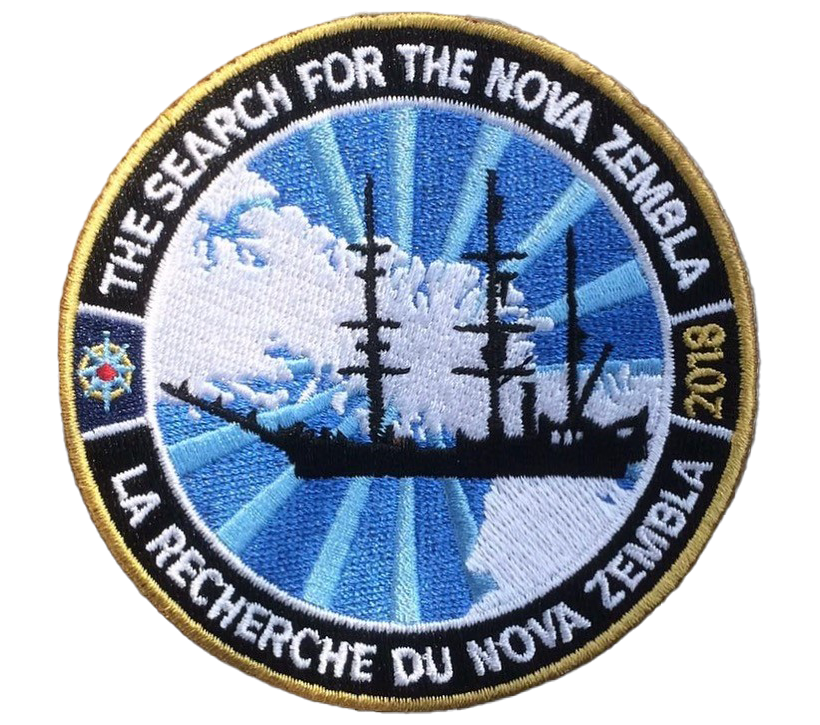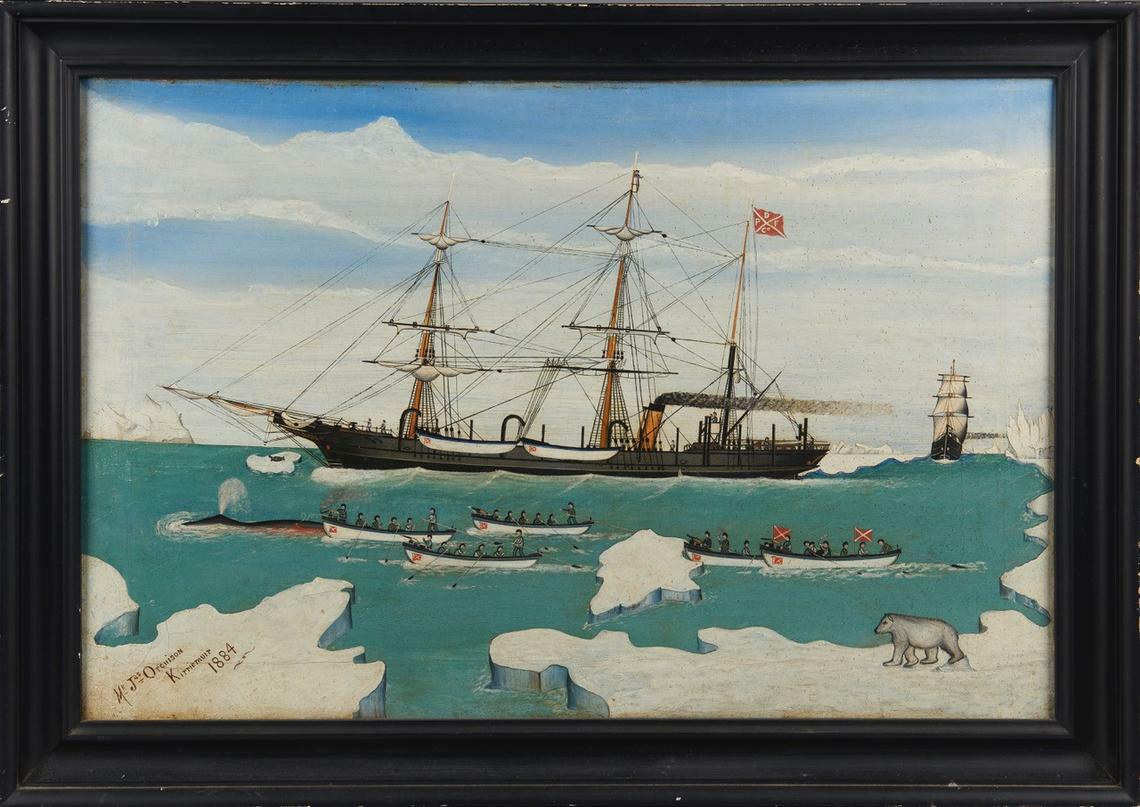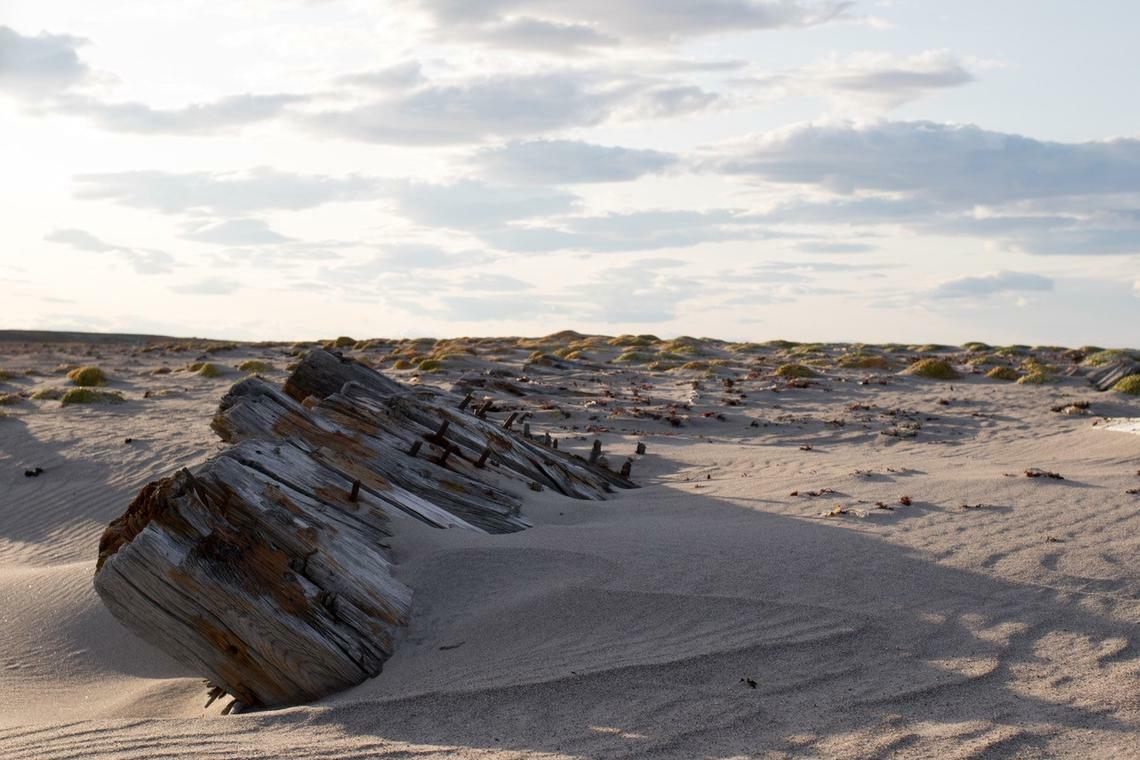Nova Zembla Shipwreck
In partnership with the Royal Canadian Geographical Society (RCGS) and One Ocean Expeditions, AINA researchers Dr. Matthew Ayre and Dr. Michael Moloney co-led a search for the 1902 wreck of Dundee whaler ‘Nova Zembla’ in Baffin Bay. 'The Search for the Nova Zembla' was an official RCGS flag expedition in 2018, which successfully identified the wreck site off eastern Baffin Island—the first whaling wreck to be discovered in the Canadian High Arctic.
Ayre and Moloney returned to the site in 2019 to survey the remains of the ship. They were joined by Alex Taylor and Robert Kautuk, researchers at the Ittaq Heritage and Research Centre, and Tommy Tremblay, a geologist with Natural Resources Canada. The 'Return to Nova Zembla' expedition team photographed and surveyed the thousands of pieces of wreckage that had washed ashore the adjacent beach.
This work inspired Indigenous-led non-profit organization Ikaarvik’s Trebek Initiative work looking at whaling legacies in Pond Inlet.

Searching for the Wreck
James Orchison and the Nova Zembla
One of the many challenges in the Nova Zembla project was finding historical materials to help confirm the identify of the whaler. While several black and white photographs exist, their low resolution made it difficult to pull out the finer details of the ship's construction and decorative bow carvings.
Fortunately, in 2019 Ayre located one of the only known paintings of the Nova Zembla, in an antiques store in Pennsylvania. This 1884 artwork, by James Orchison, a blacksmith who sailed aboard the Nova Zembla in 1883, assisted in confirming the ship's identify. Ayre was able to match one of the ornamentation pieces from the bowsprit that had washed up on the eastern Baffin Island beach to the floral carvings seen in the 1884 painting.
In 2022, a fiddle made by James Orchison was donated by AINA Research Associate Jon Dudley and his wife Karen Dudley to the McManus Museum in Dundee, Scotland.

A 1884 painting of the Nova Zembla, by James Orchison, blacksmith aboard the ship in 1883.

Fiddle made by James Orchison, blacksmith aboard the Nova Zembla in 1883.
News Articles
-
Exclusive photos: See the wreckage of the first High Arctic whaling vessel ever found | Canadian Geographic
-
Shipwrecks in the Arctic can tell us about the history of our climate | UCalgary News
-
Researchers bring sunken ships and forgotten histories of the Arctic to Calgary | UCalgary News
-
Baffin Island shipwreck gives glimpse into little known chapter of Canadian history | CTV
-
Calgary researchers discover 116-year-old whaling wreckage in Canada’s Arctic | Global News
-
Expedition uncovers first whaling wreck ever found in Canada's High Arctic | UCalgary News
-
Calgary scientists find whaling ship remains sticking out of sand after 116 years | CBC
-
RCGS flag expedition discovers wreck of Scottish whaling ship off Baffin Island | Canadian Geographic
Publications
- Ayre, M. (2022) ‘Beyond Nova Zembla’, The Explorer’s Journal, Apr., pp. 40-57.
- Ayre, M. (2021) ‘7 hours, a rubber dinghy, and a shipwreck: The search for Nova Zembla’, Arctic, vol. 74, no. 2, pp. 234-237. doi: 10.14430/arctic72783
- Ayre, M. (2020) 'The wreck of Nova Zembla: A single entry in a 118-year-old Arctic whaling logbook diverted the course of Dr Matthew Ayre's research, taking him from the lignin scents of dusty archives to the perilous waters of the Canadian Arctic.', Geographical, v. 92, no. 5, pp. 61-65.

A 60-foot section of Nova Zembla's hull, partially buried in the sand.
Matthew Ayre
